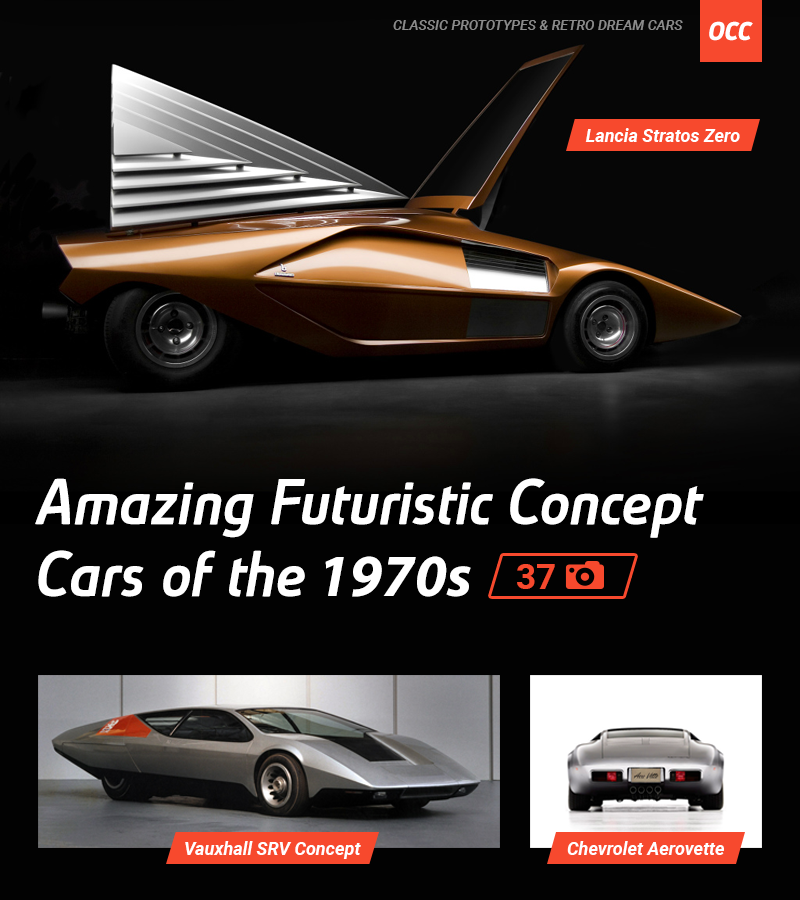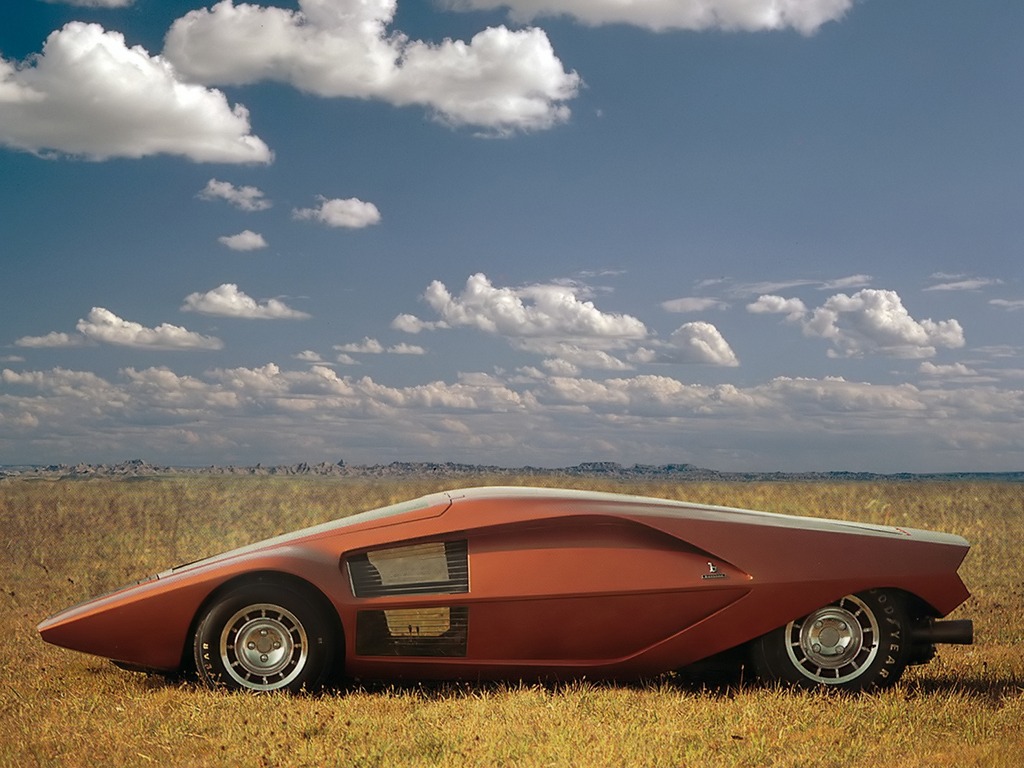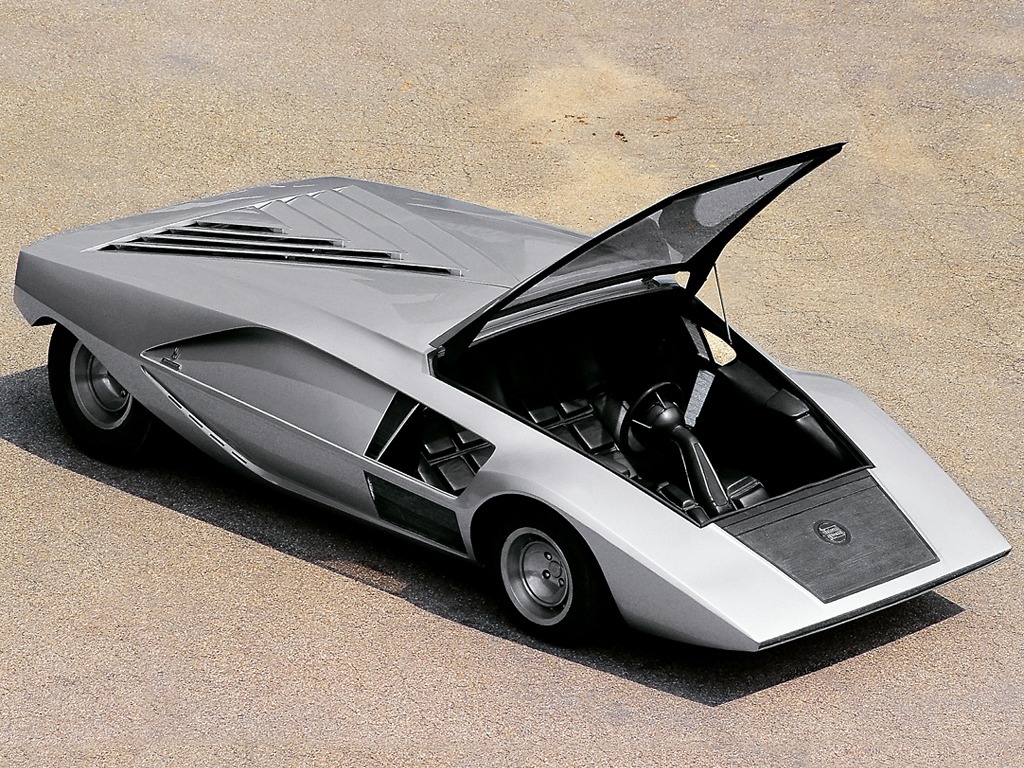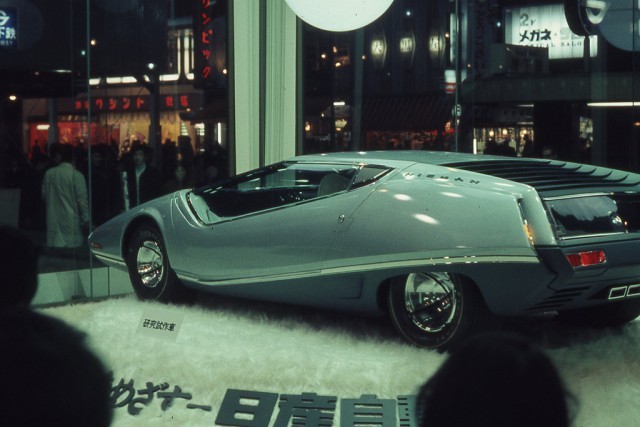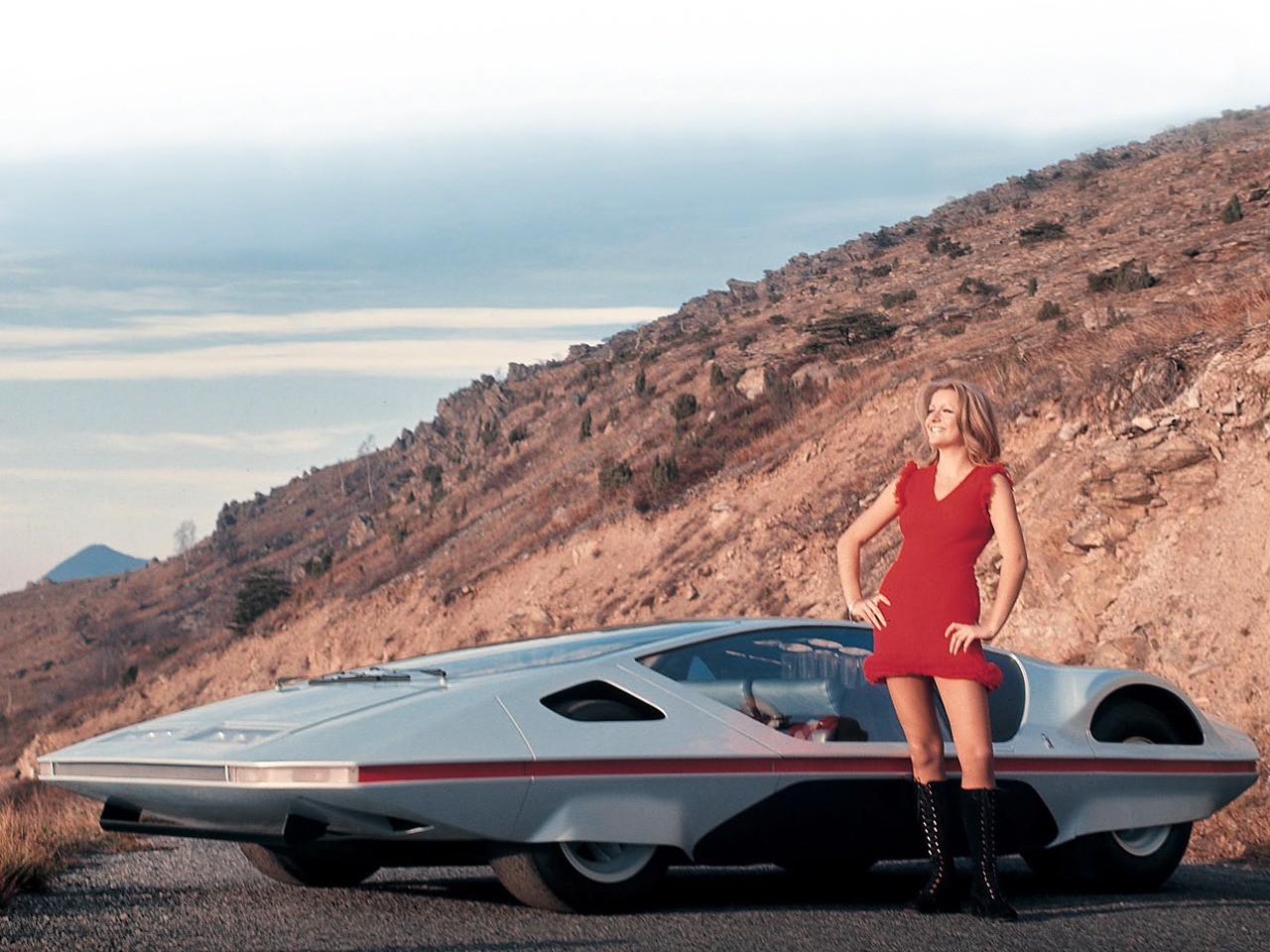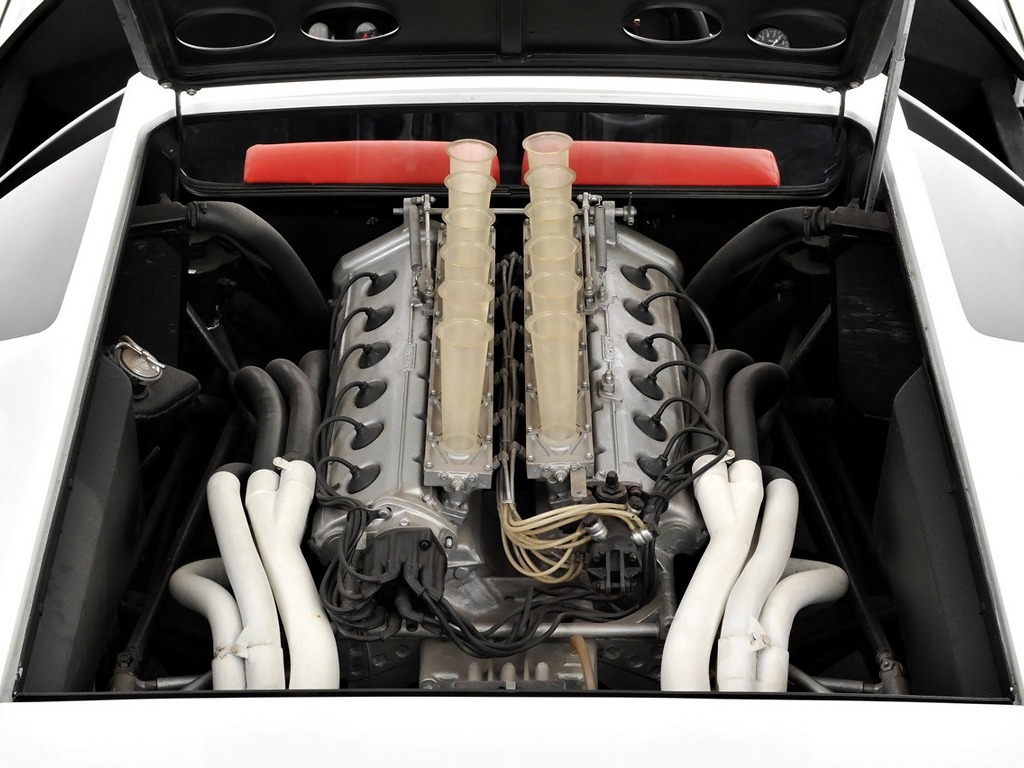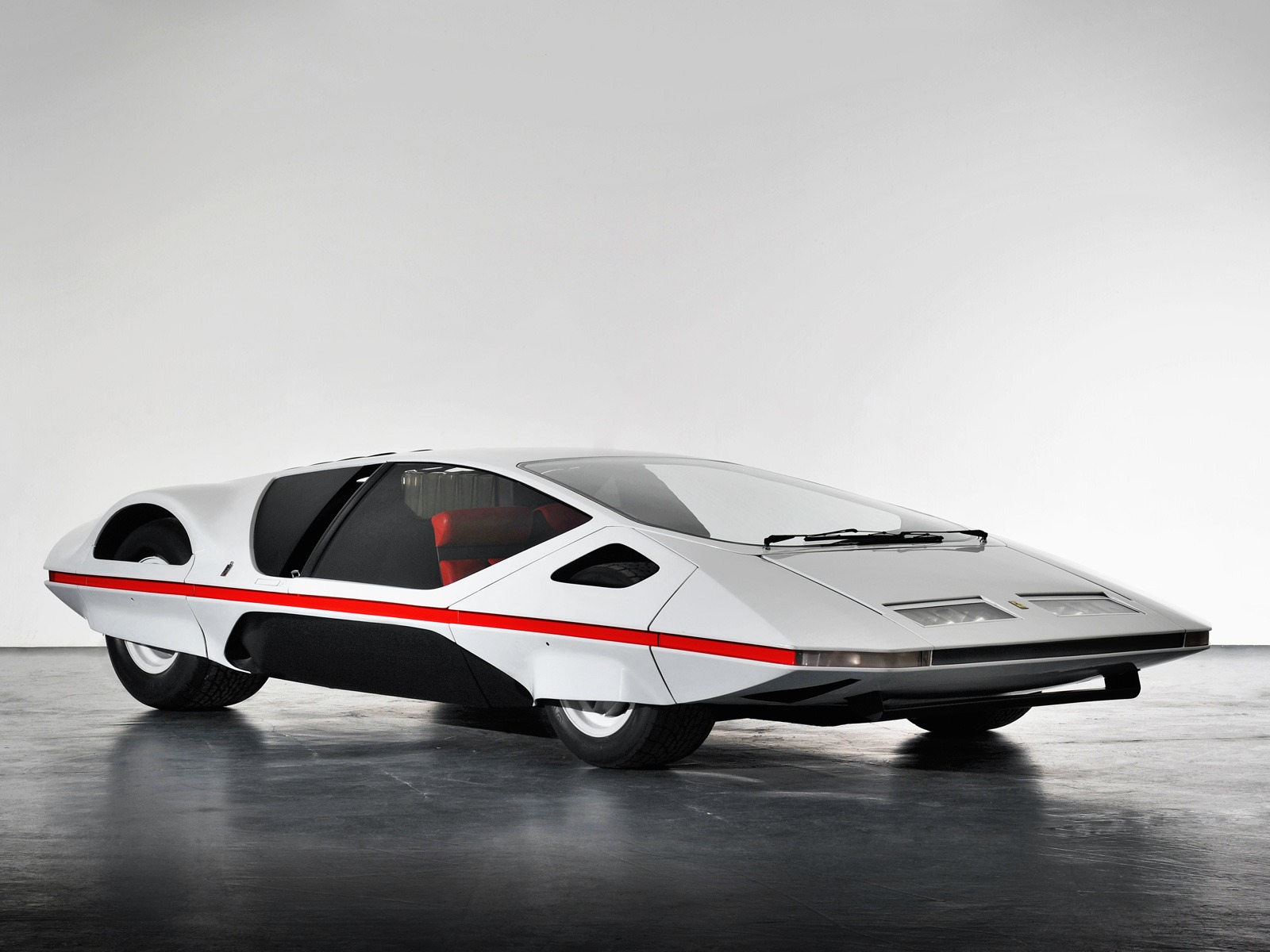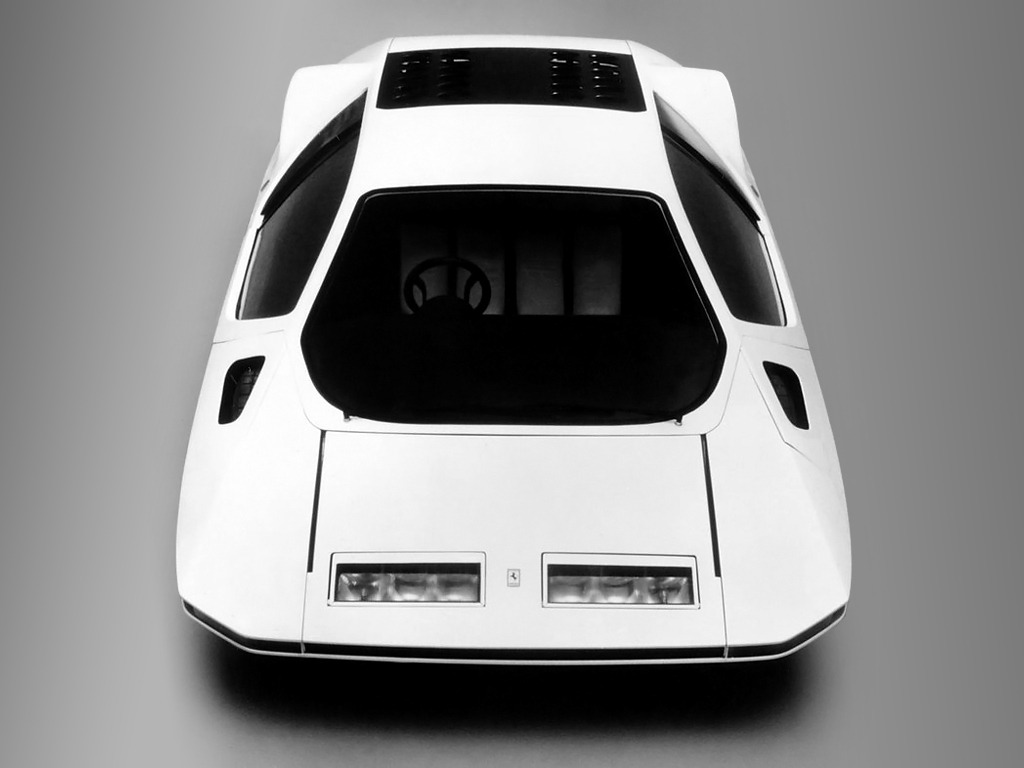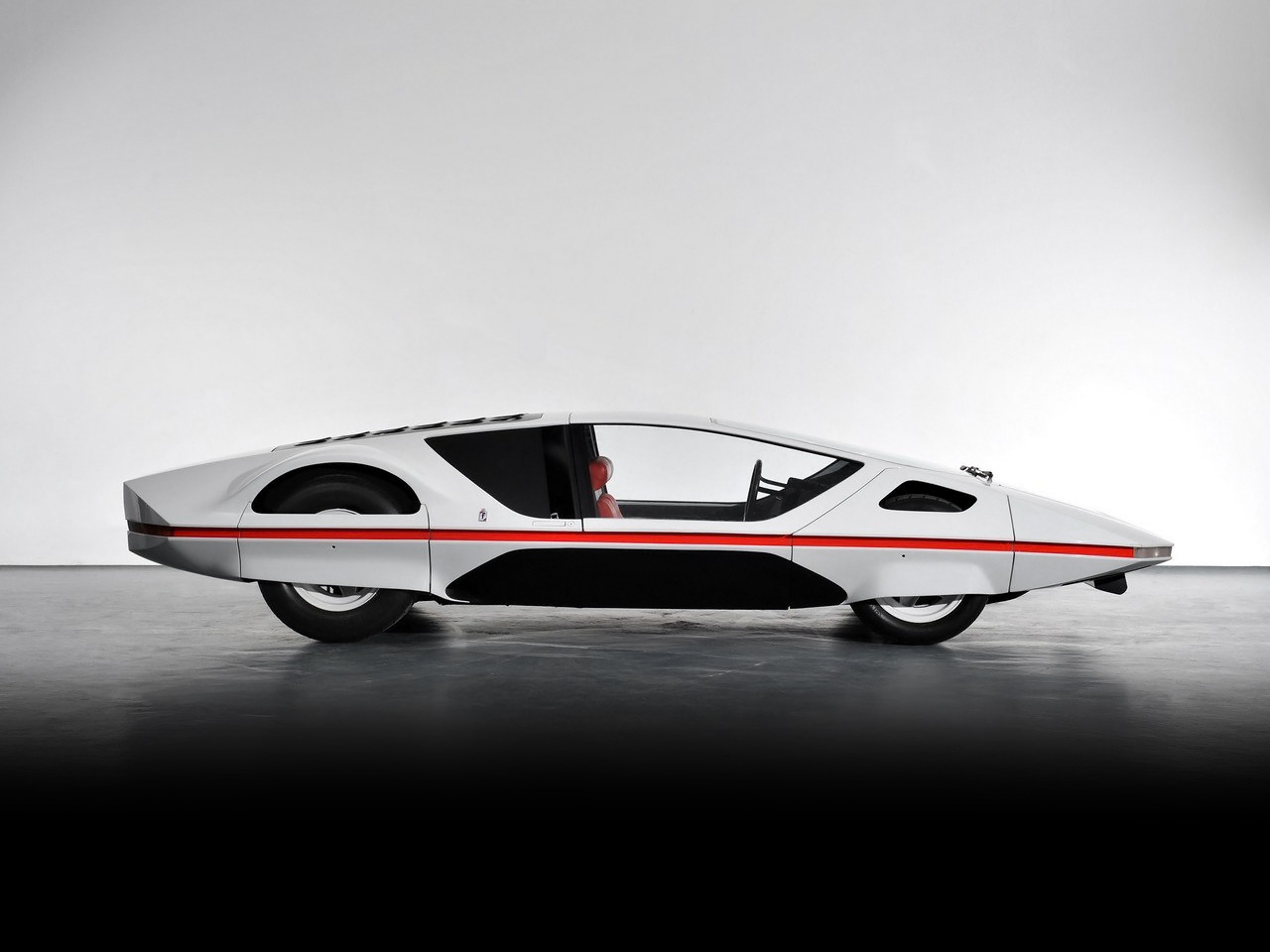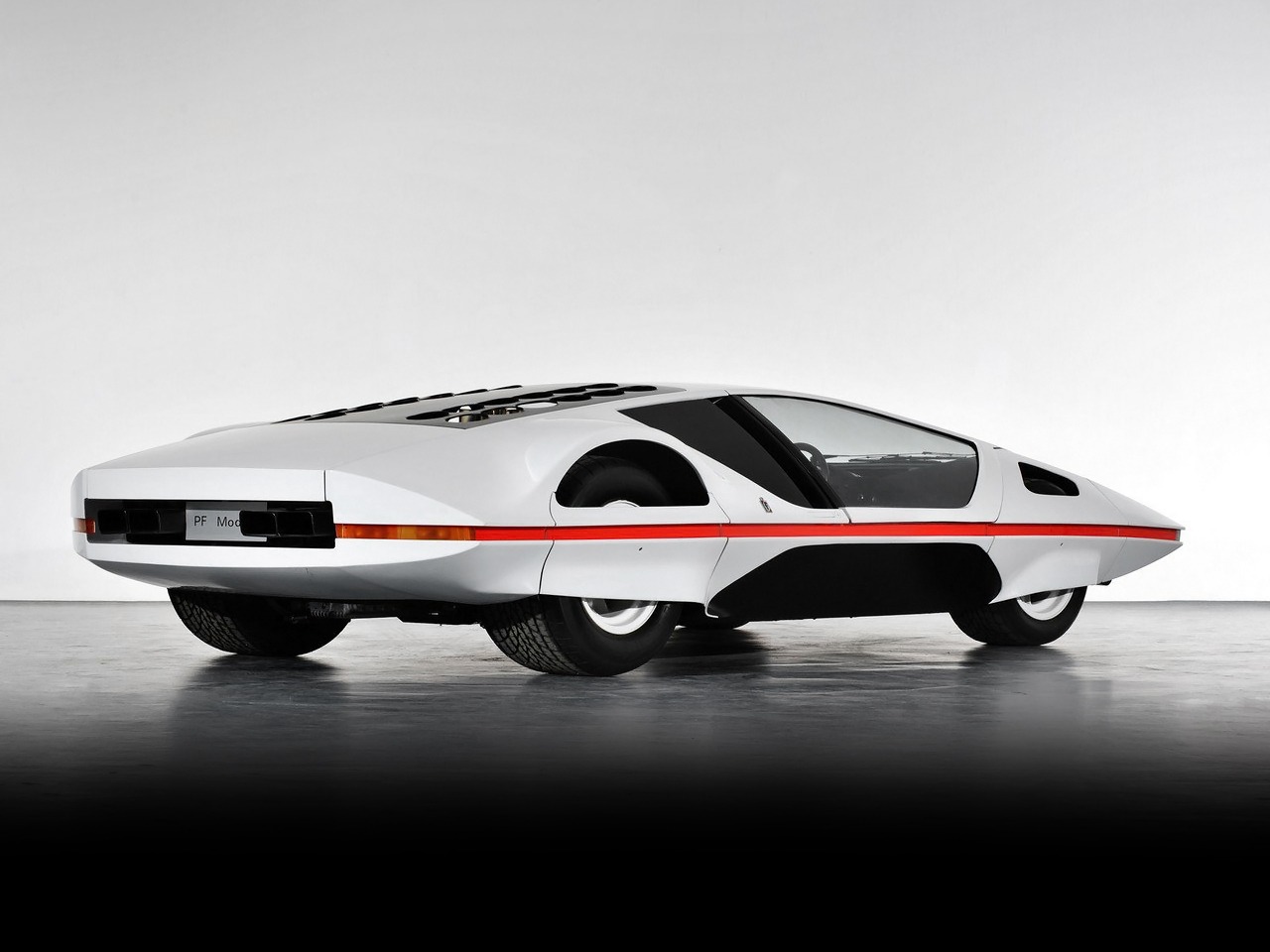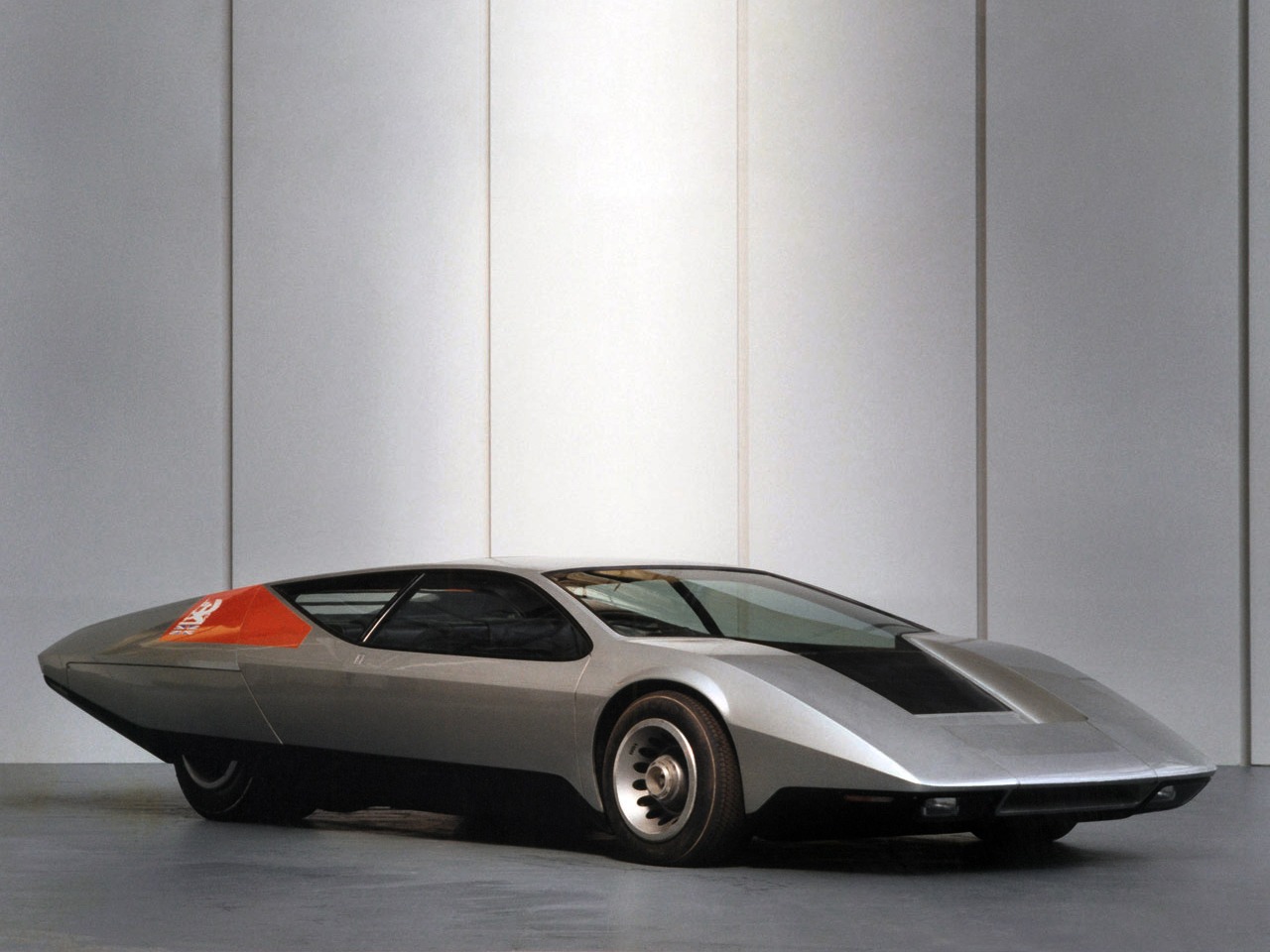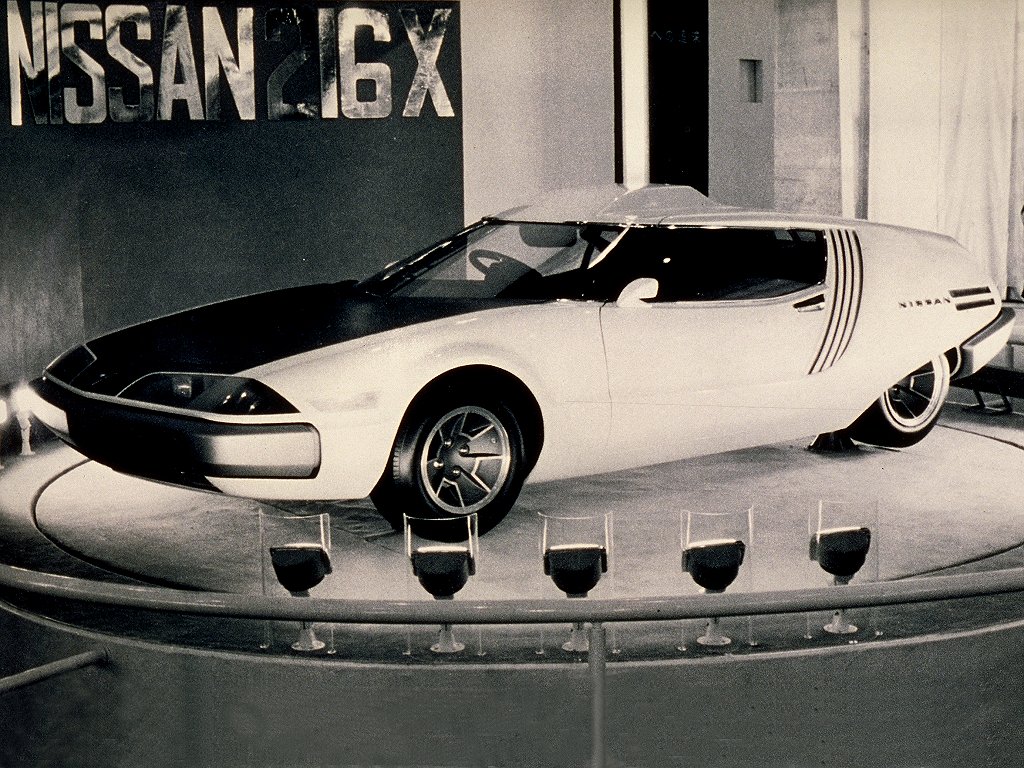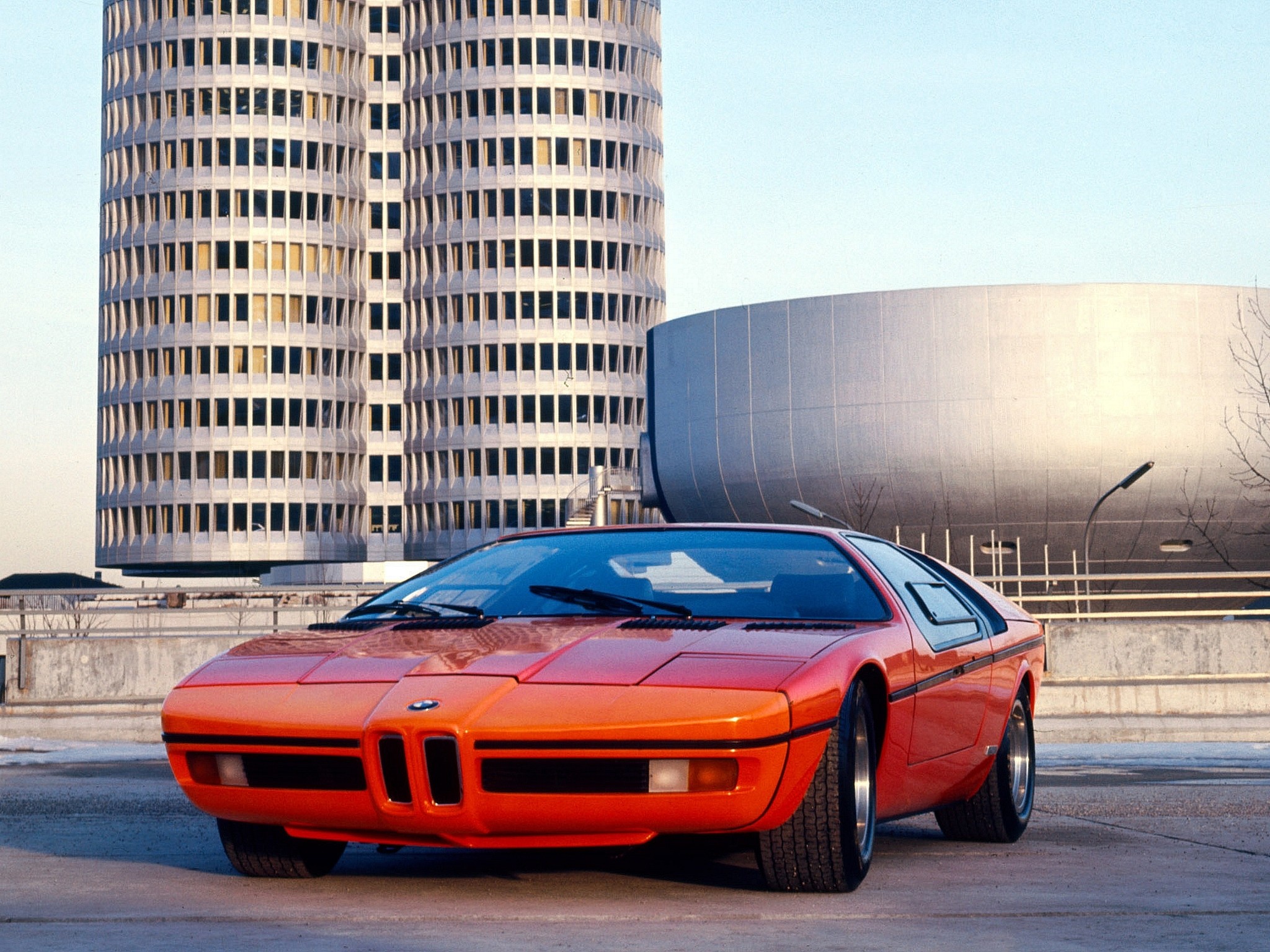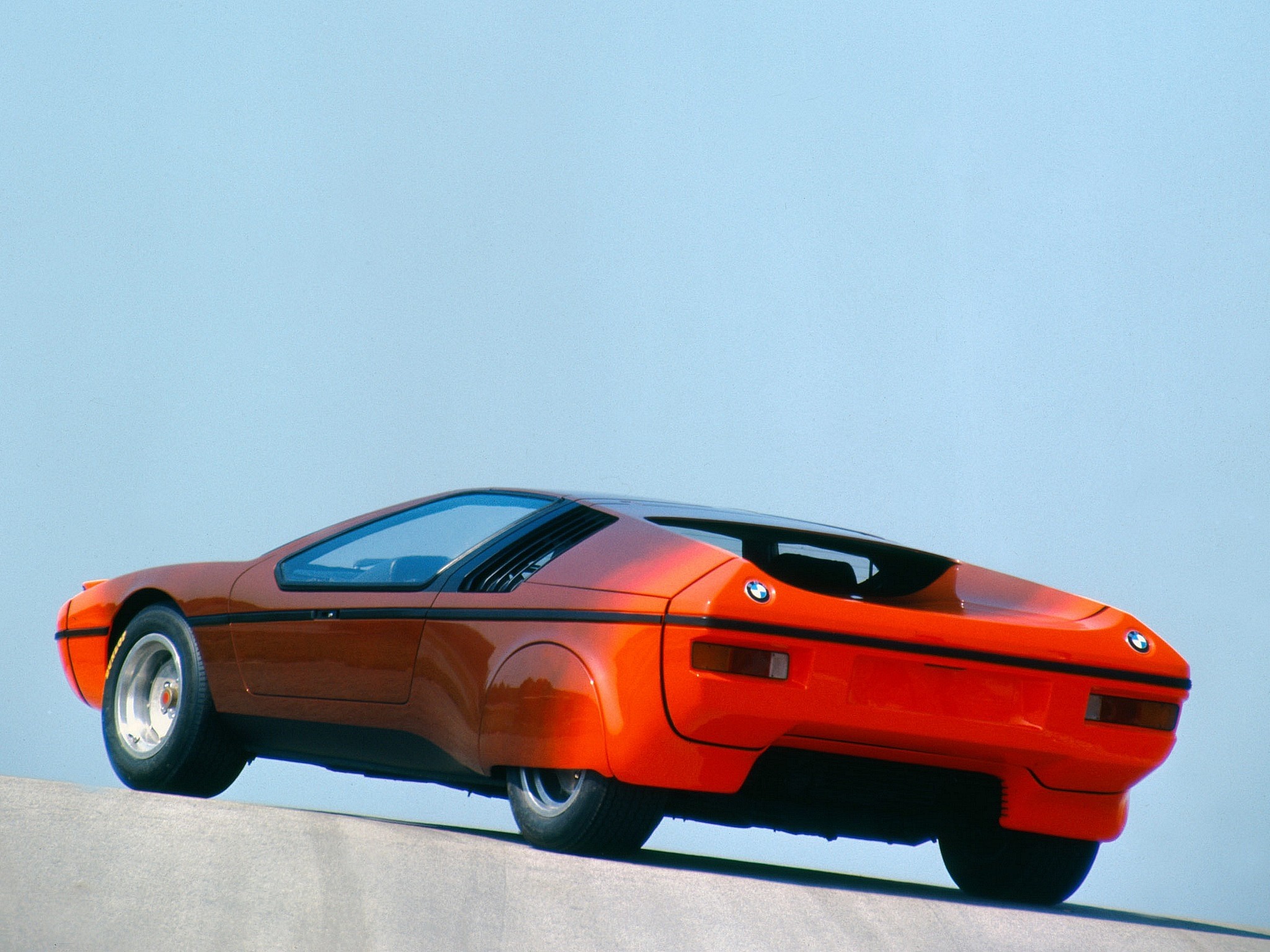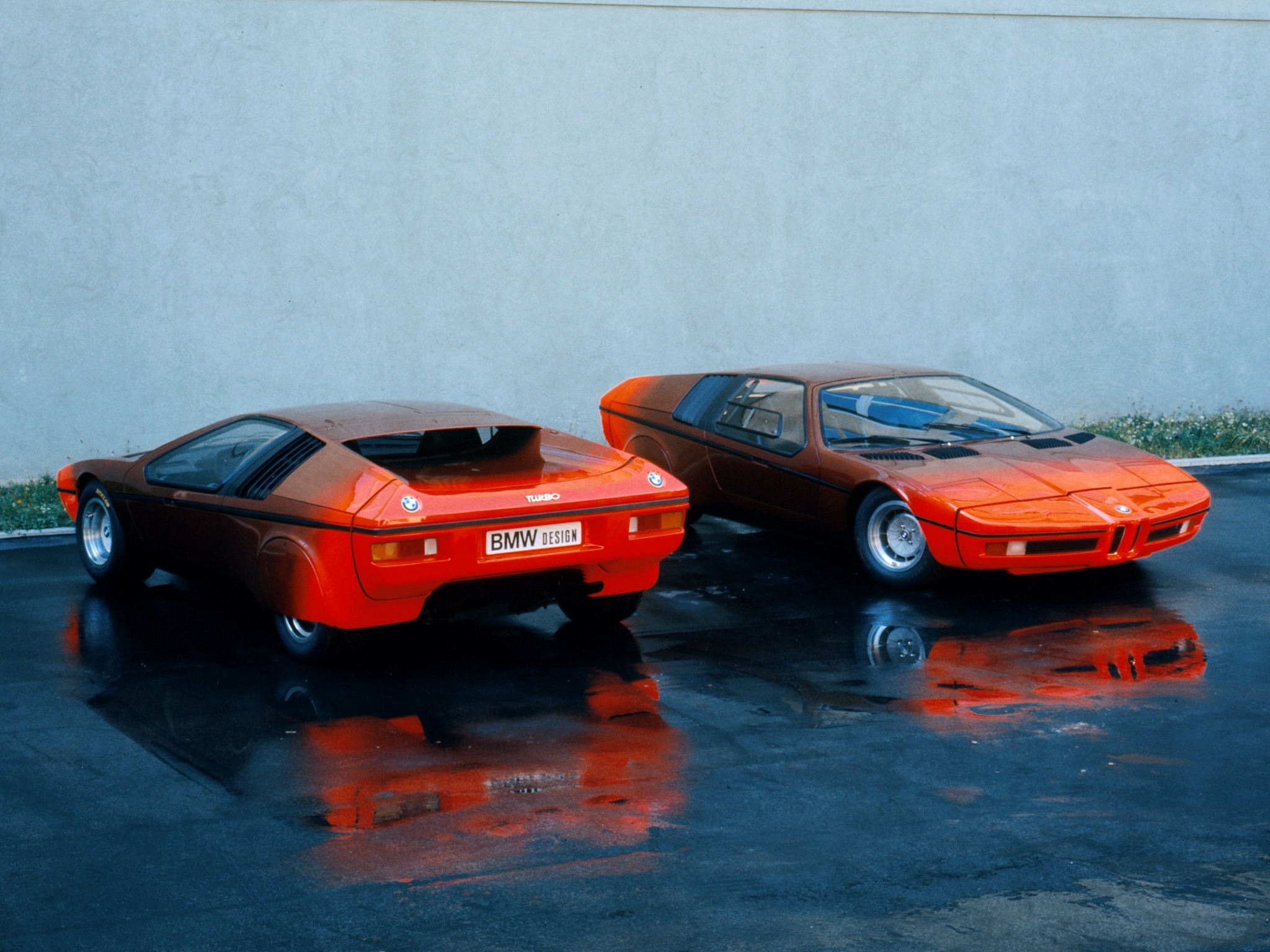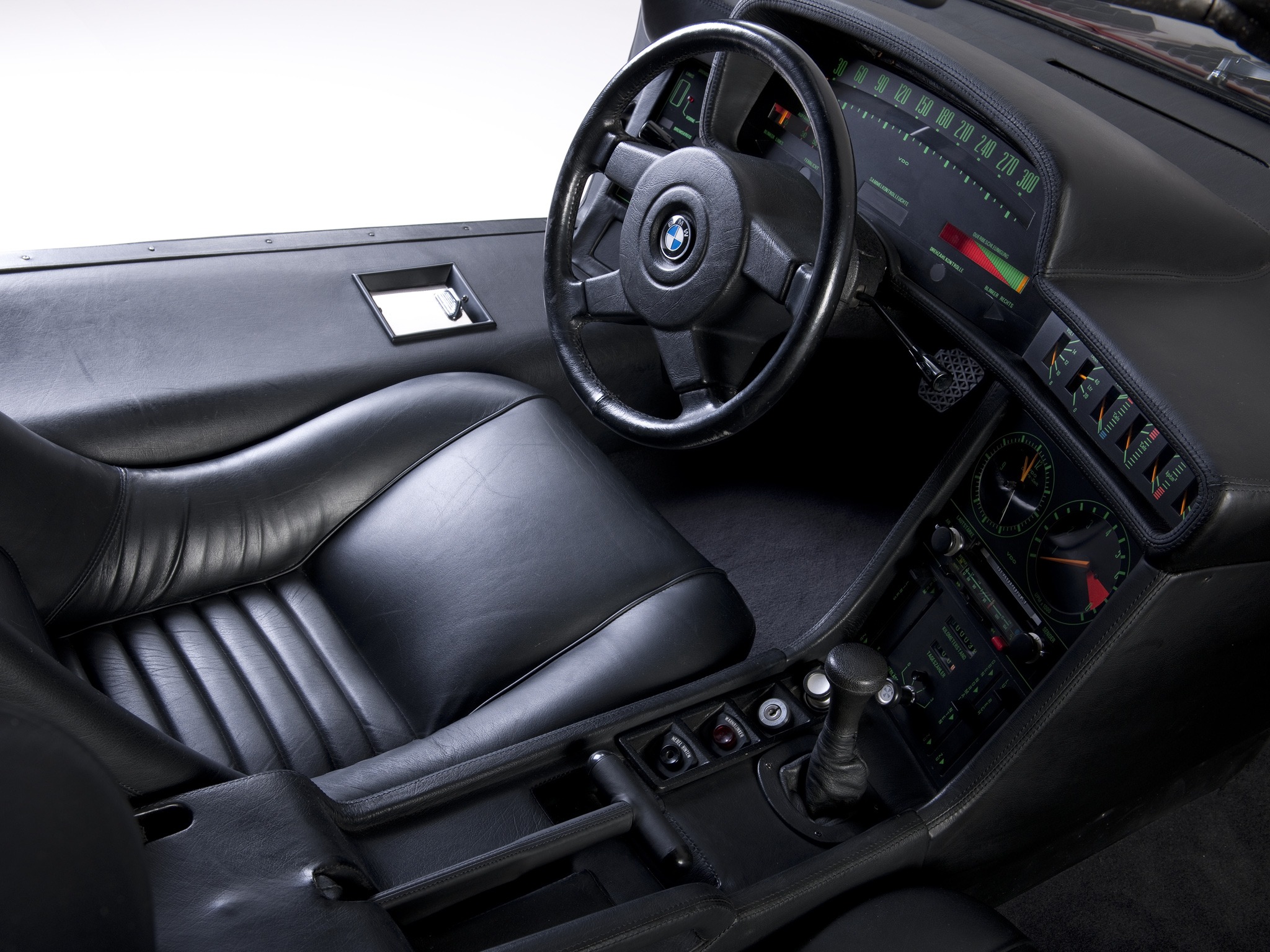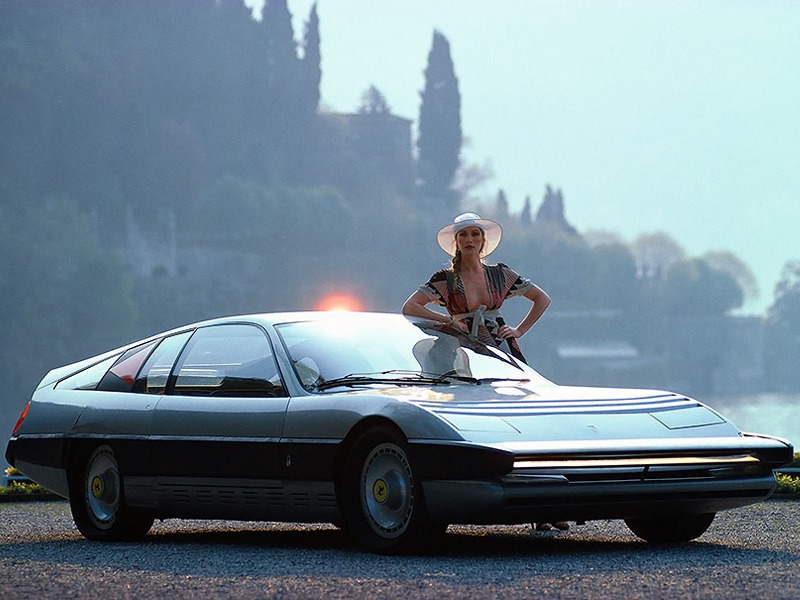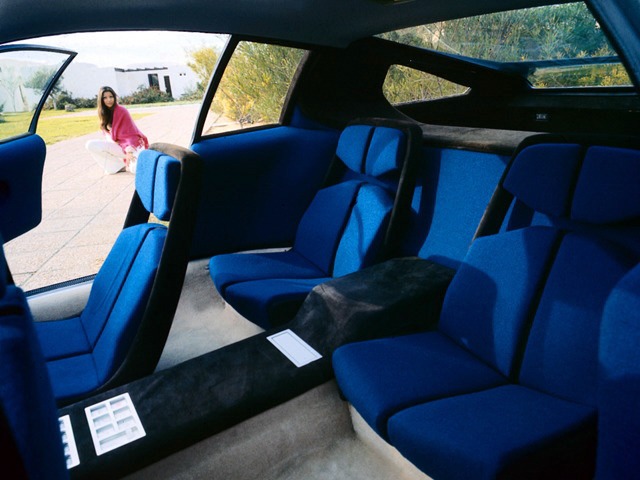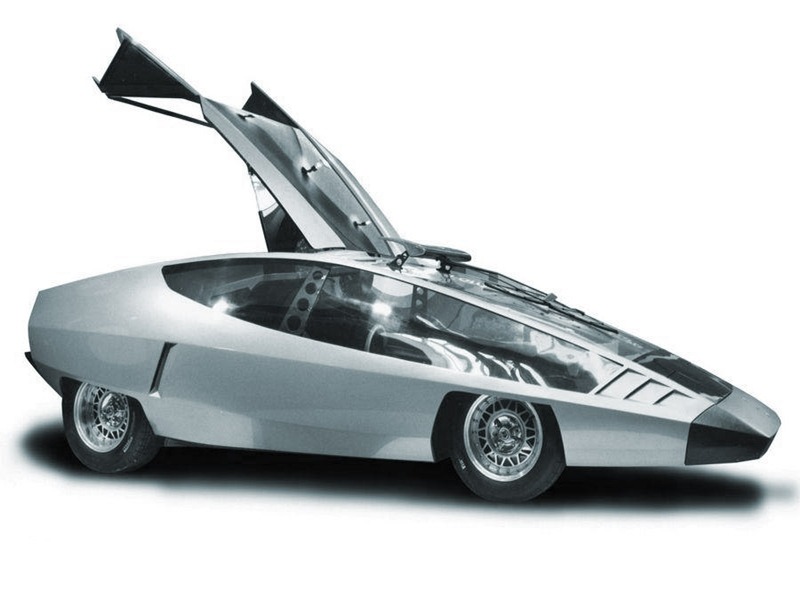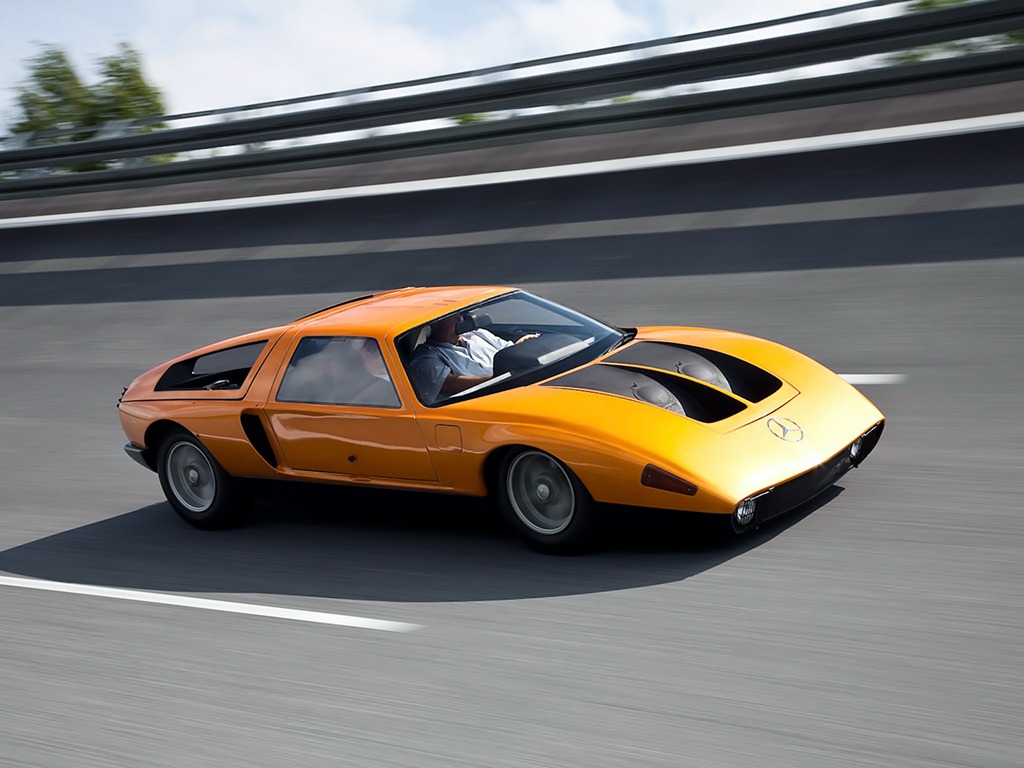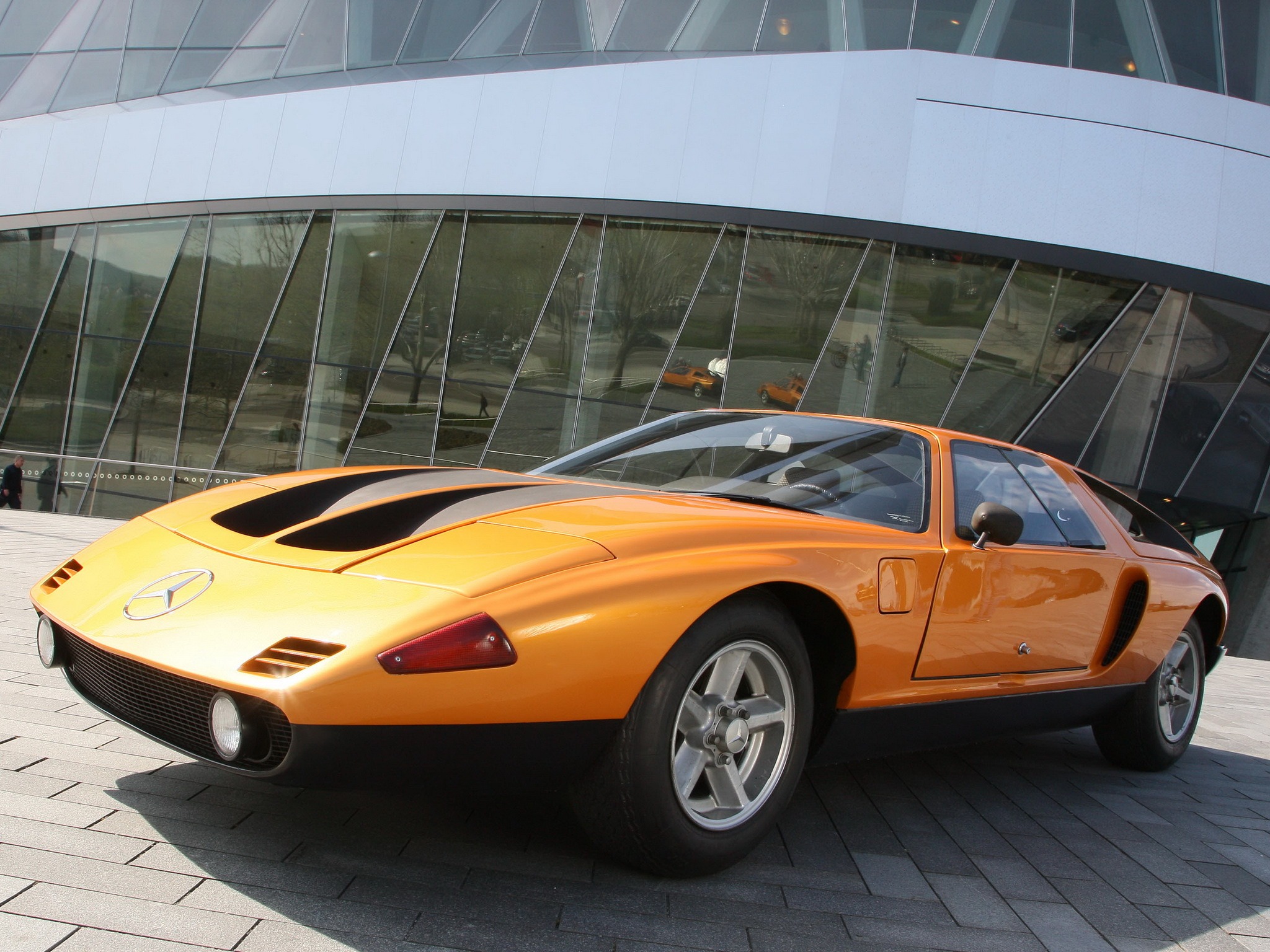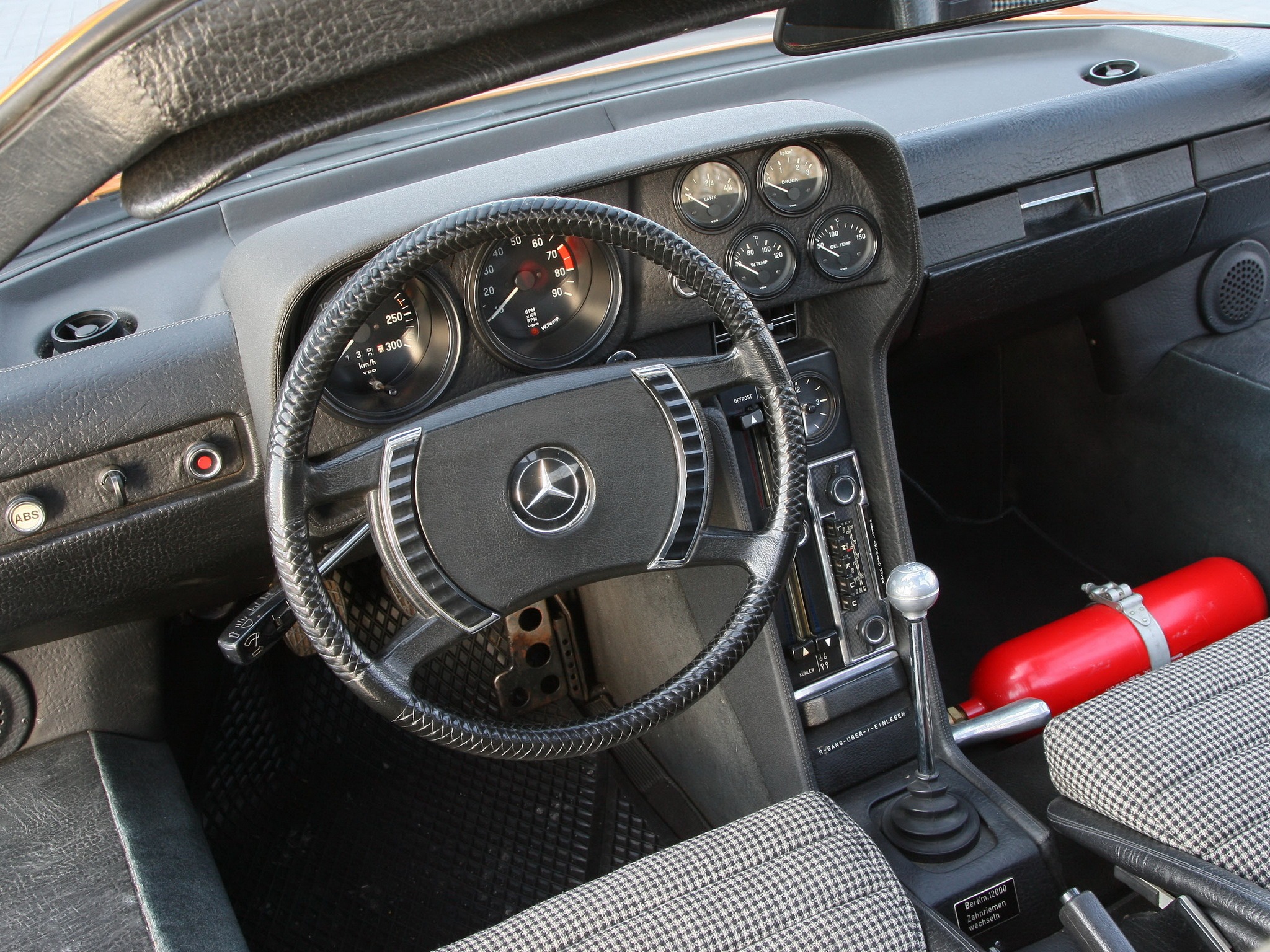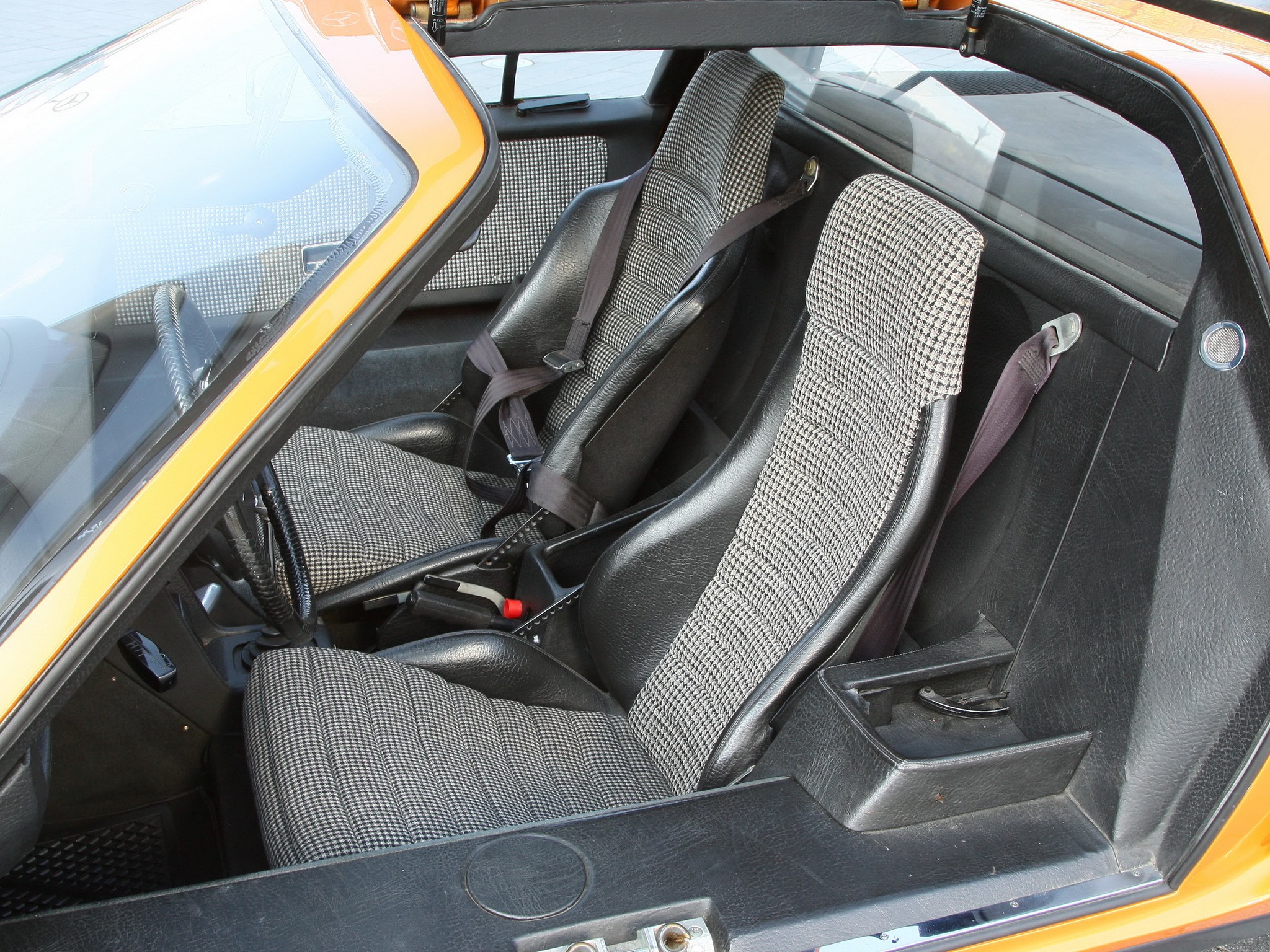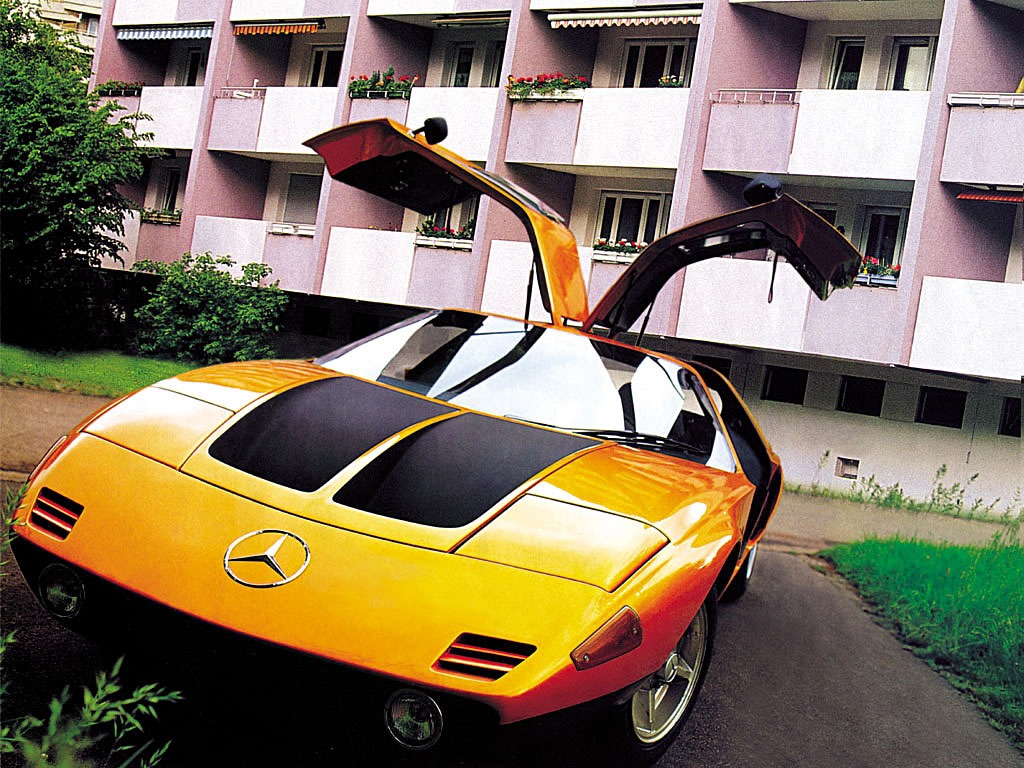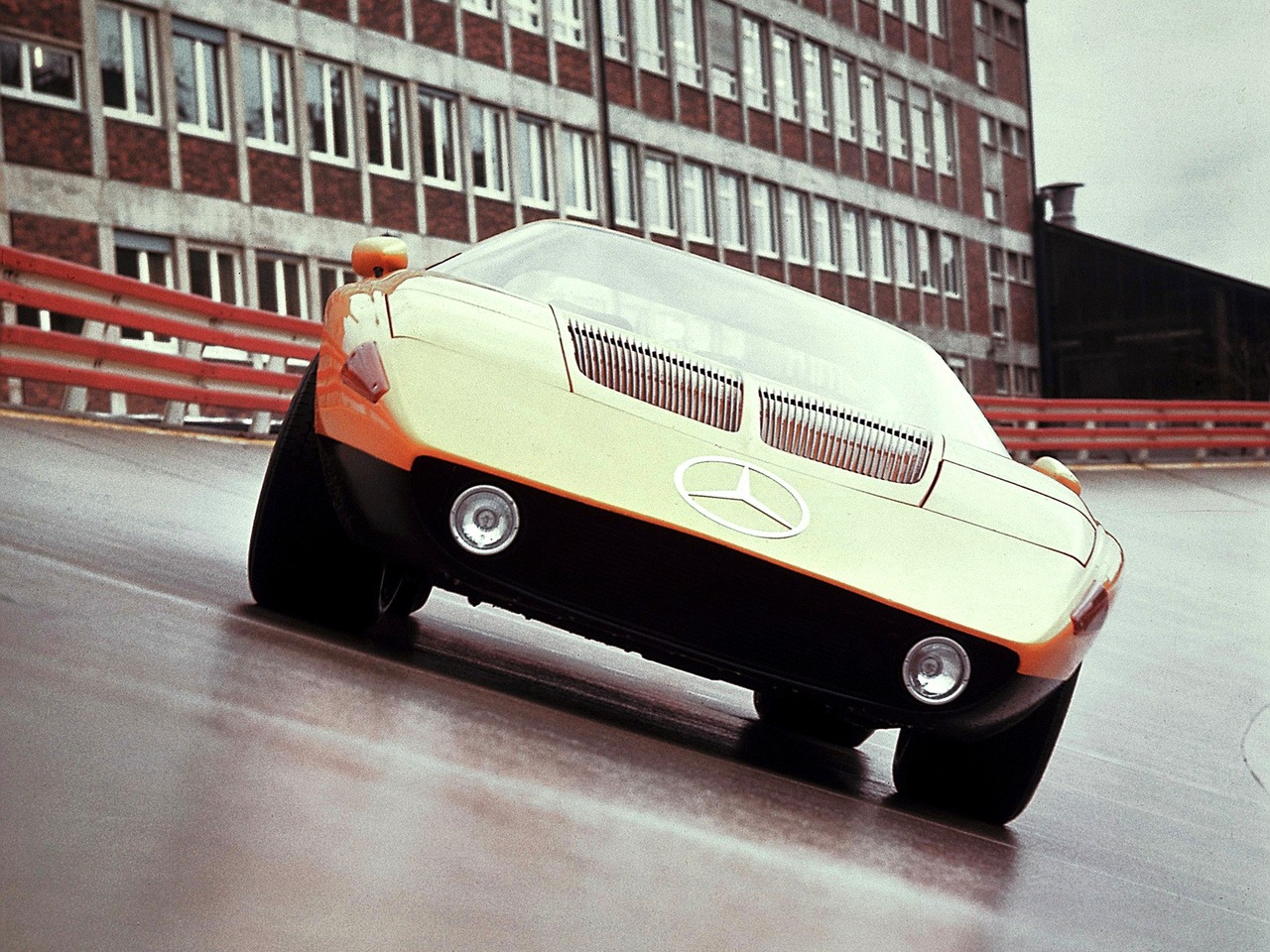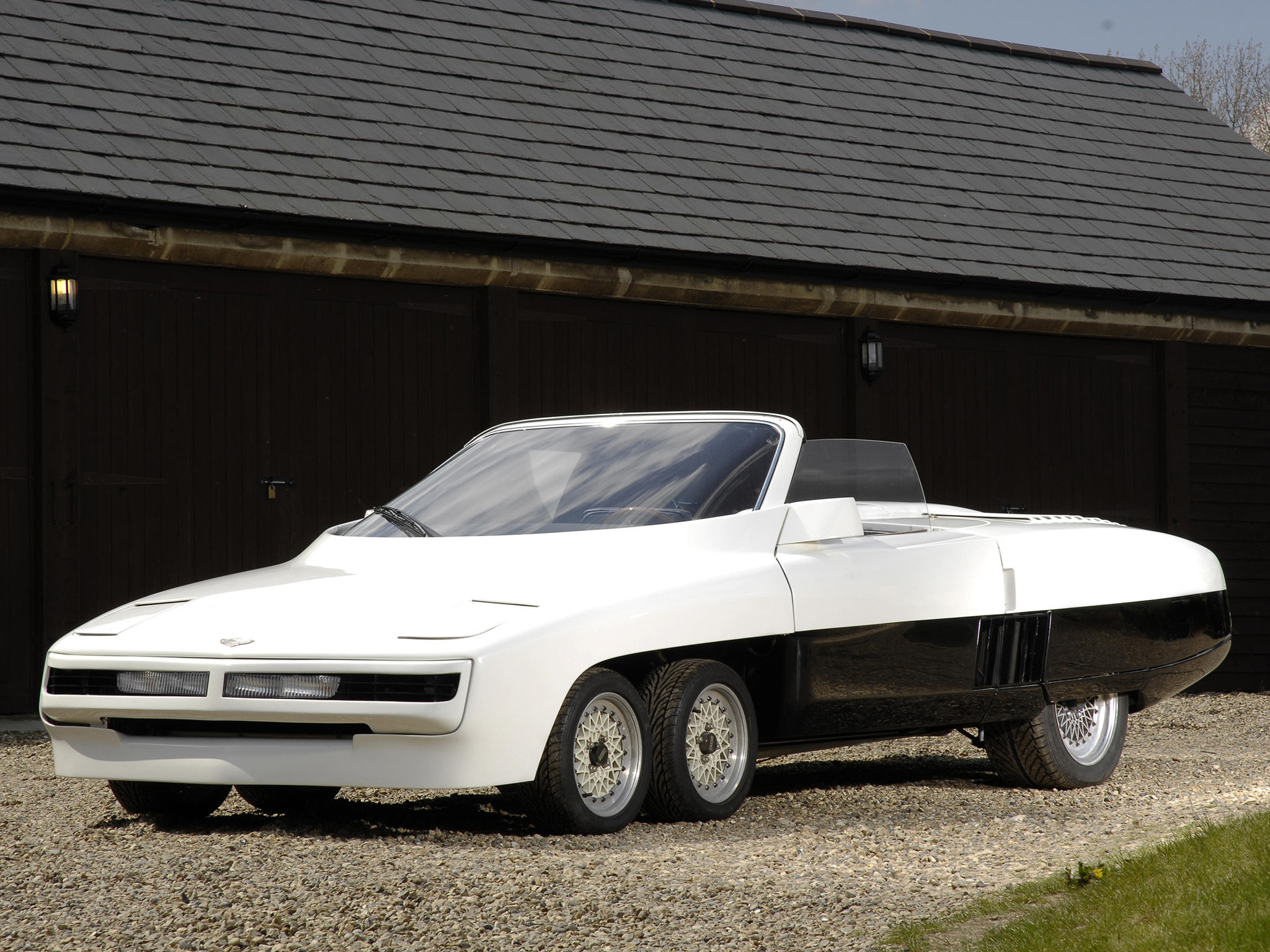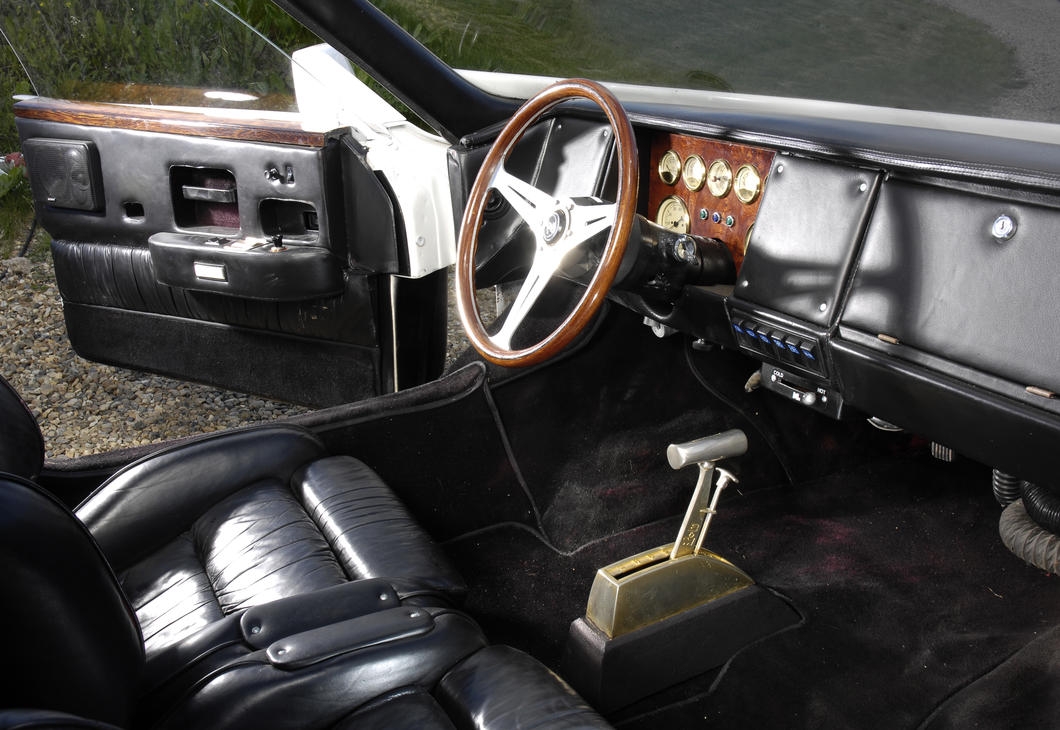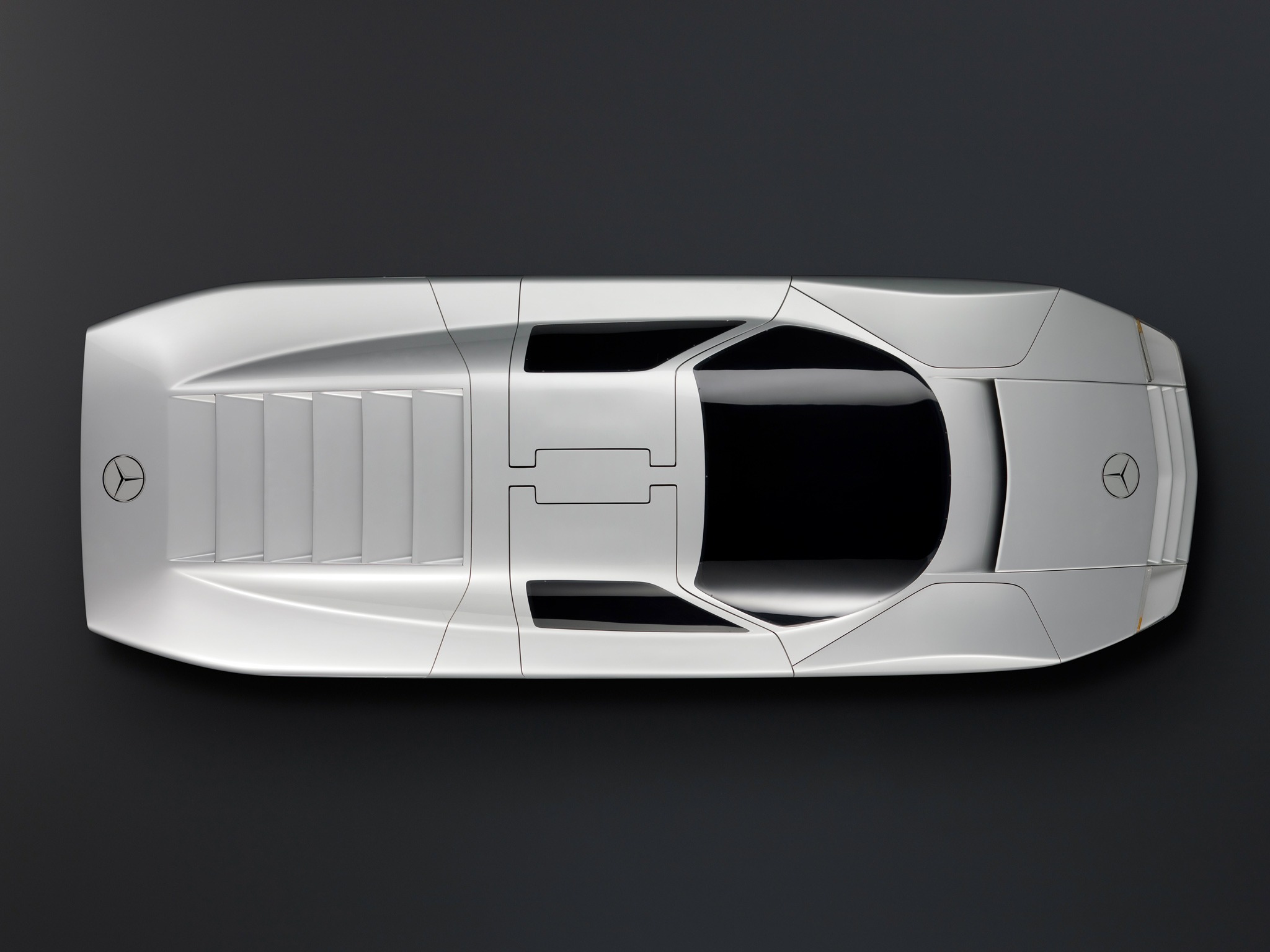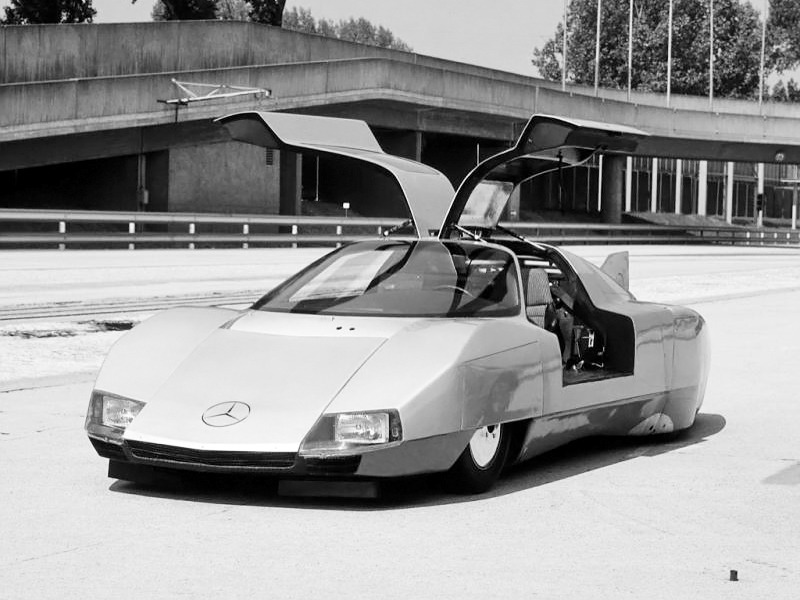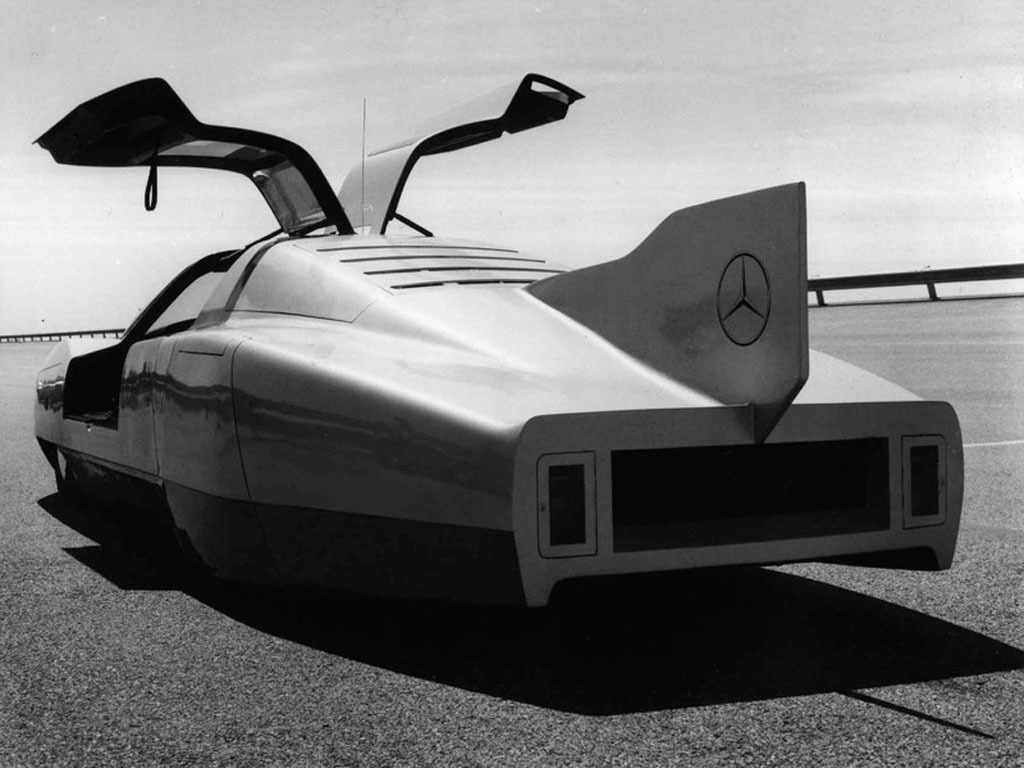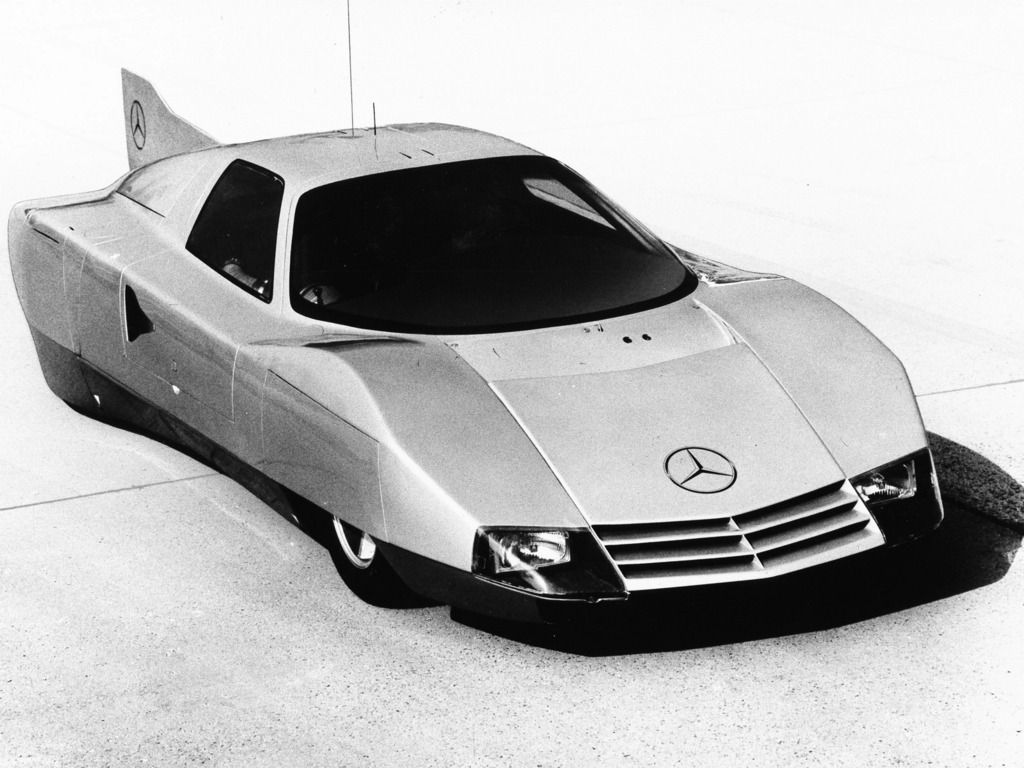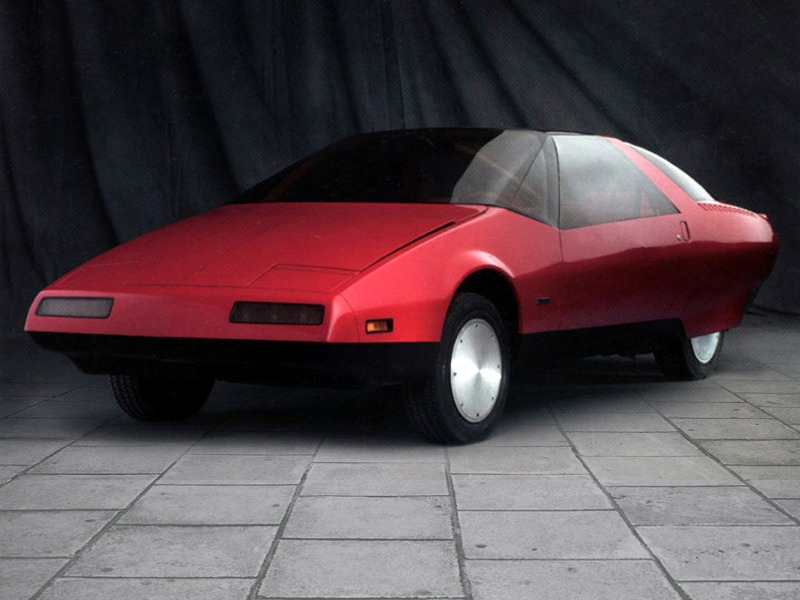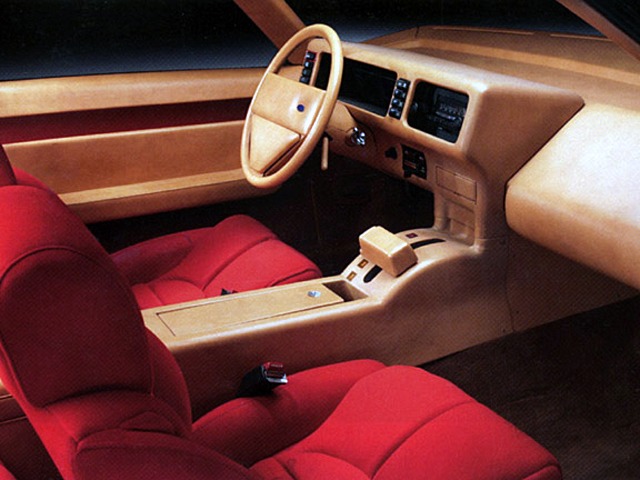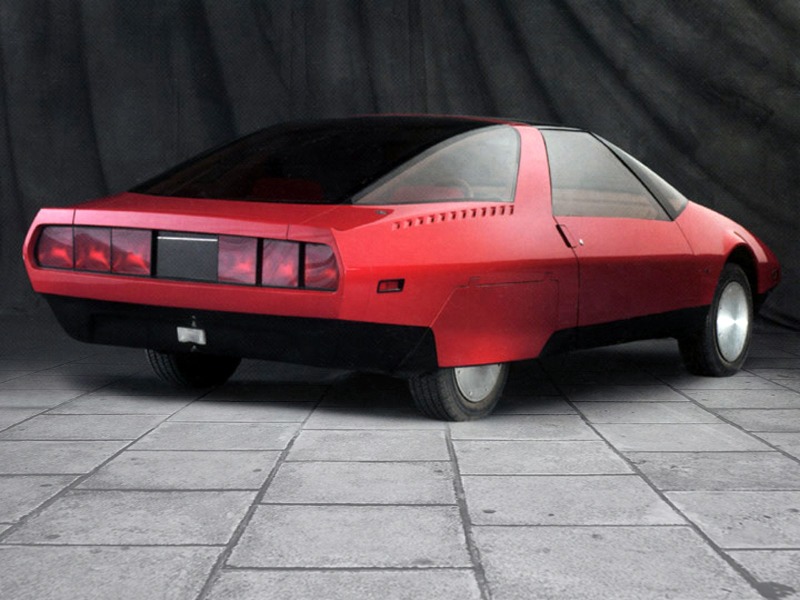Lancia Stratos Zero (1970)
The Lancia Stratos 0 (or Zero) preceded the Lancia Stratos HF prototype by 12 months and was first shown to the public at the Turin Motor Show in 1970. The futuristic bodywork was designed by Marcello Gandini, head designer at Bertone, and featured a 1.6 L Lancia Fulvia V4 engine.
Nissan 126x Concept (1970)
The 126X had a wedge shaped design with a forward-tilting cockpit canopy. The slots along the hoods center housed red, yellow, and green lights which lit up in accordance to what the vehicle was doing (accelerating, braking, or constant speed). The vehicle featured a rear-mounted 3-litre 6 cylinder power plant and 4-wheel drive.
Ferrari 512 S Modulo Concept (1970)
Ferrari Modulo is an extreme special berlinetta, single-volume, experimental one-off prototype, built on the Ferrari 512S chassis, of a futuristic car breaking the fetters of the traditional stylistic language, representing the atmosphere of the early Seventies.
Vauxhall SRV Concept (1970)
Nissan 216x Concept (1971)
The 216X utilized a transverse-mounted 2-litre 4-cylinder power plant. While in motion, the bumpers were designed to extend automatically by just under 6 inches. The roof-bulge housed the optics for a rear-view periscope. The 216X is knows as Nissans experimental safety car.
BMW Turbo (1972)
The E25 Turbo concept sports car was built by BMW as a celebration for the 1972 Summer Olympics in Munich. It was designed by Paul Bracq, with gullwing doors and was based on a modified 2002 chassis with a mid-mounted engine. The Turbo featured a 276 hp turbocharged version of the engine from the BMW 2002, foam-filled front and rear sections to absorb impact, side impact beams, a braking distance monitor utilizing radar, and a futuristic cockpit. The car developed 206 kW (280 PS; 276 hp) at 7100 rpm and could reach 100 km/h (62 mph) from a standstill in 6.6 seconds. The top speed was 250 km/h (155 mph).
Ferrari Studio Cr25 Concept (1974)
The Ferrari Studio CR 25 was designed by Aldo Brovarone of Pininfarina and was shown at the Turin Motorshow in October 1974. It was an aerodynamic study which achieved a figure of only Cd. 0.256. Among it’s aerodynamic aids were airbrakes situated behind the windows and bumpers designed to act as spoilers.
Ford Coins Concept (1974)
Chevrolet Aerovette Concept (1976)
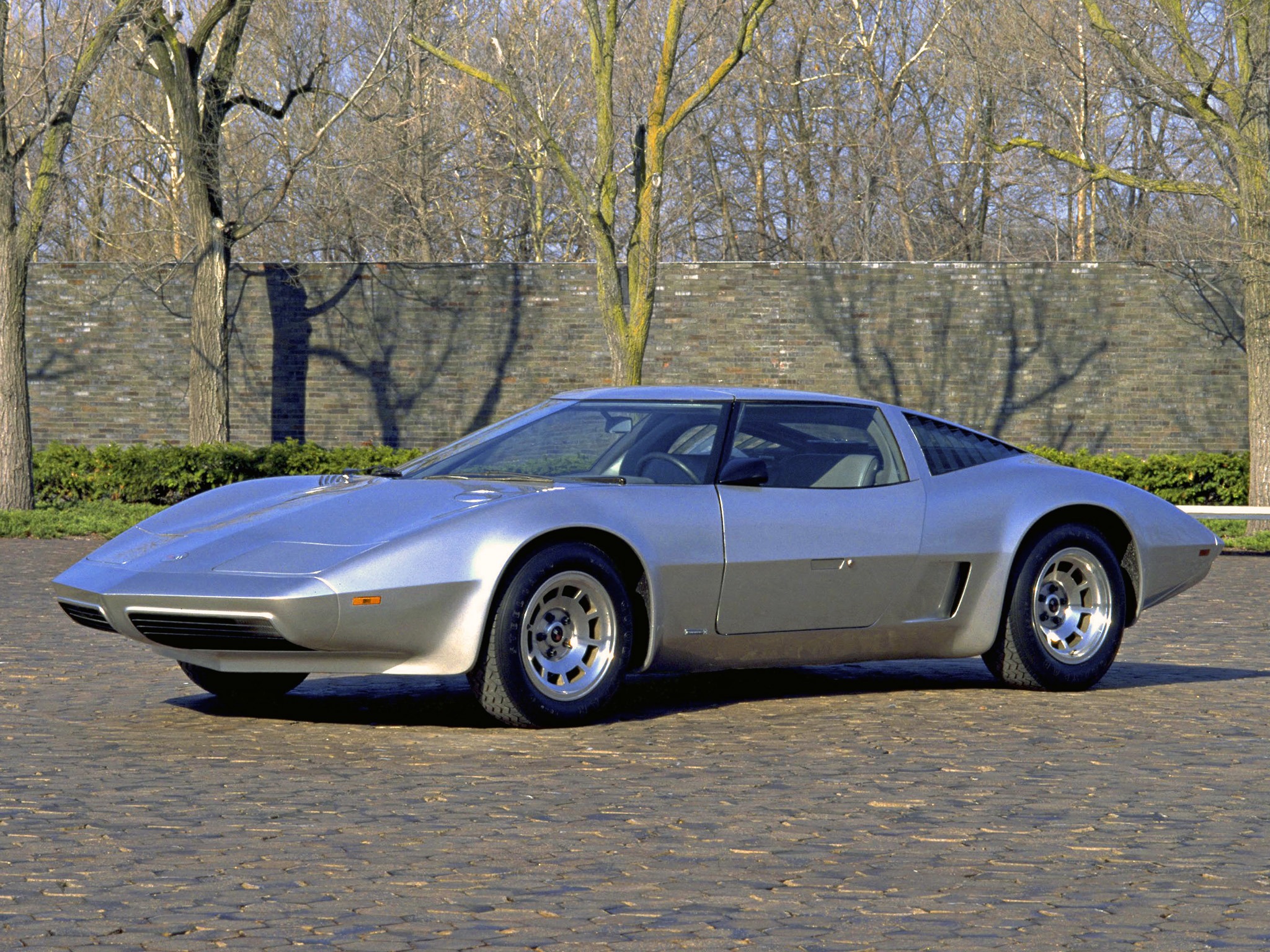
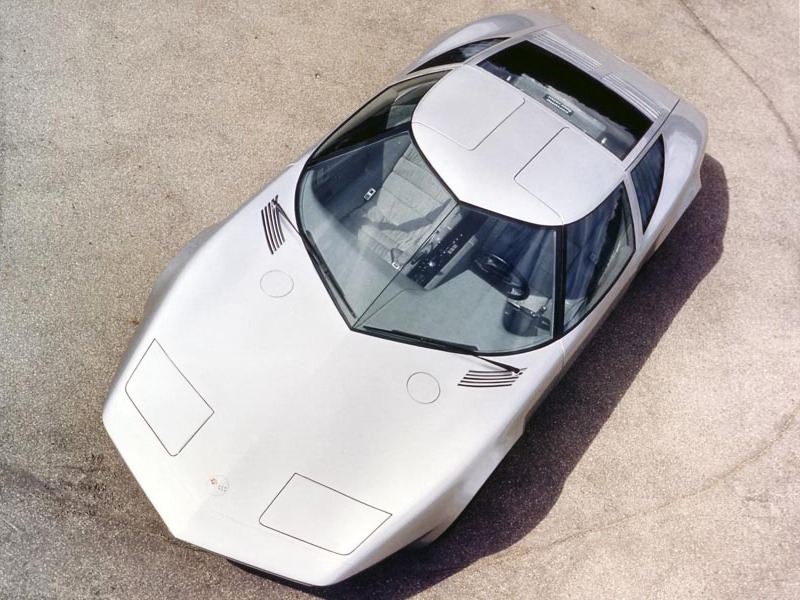
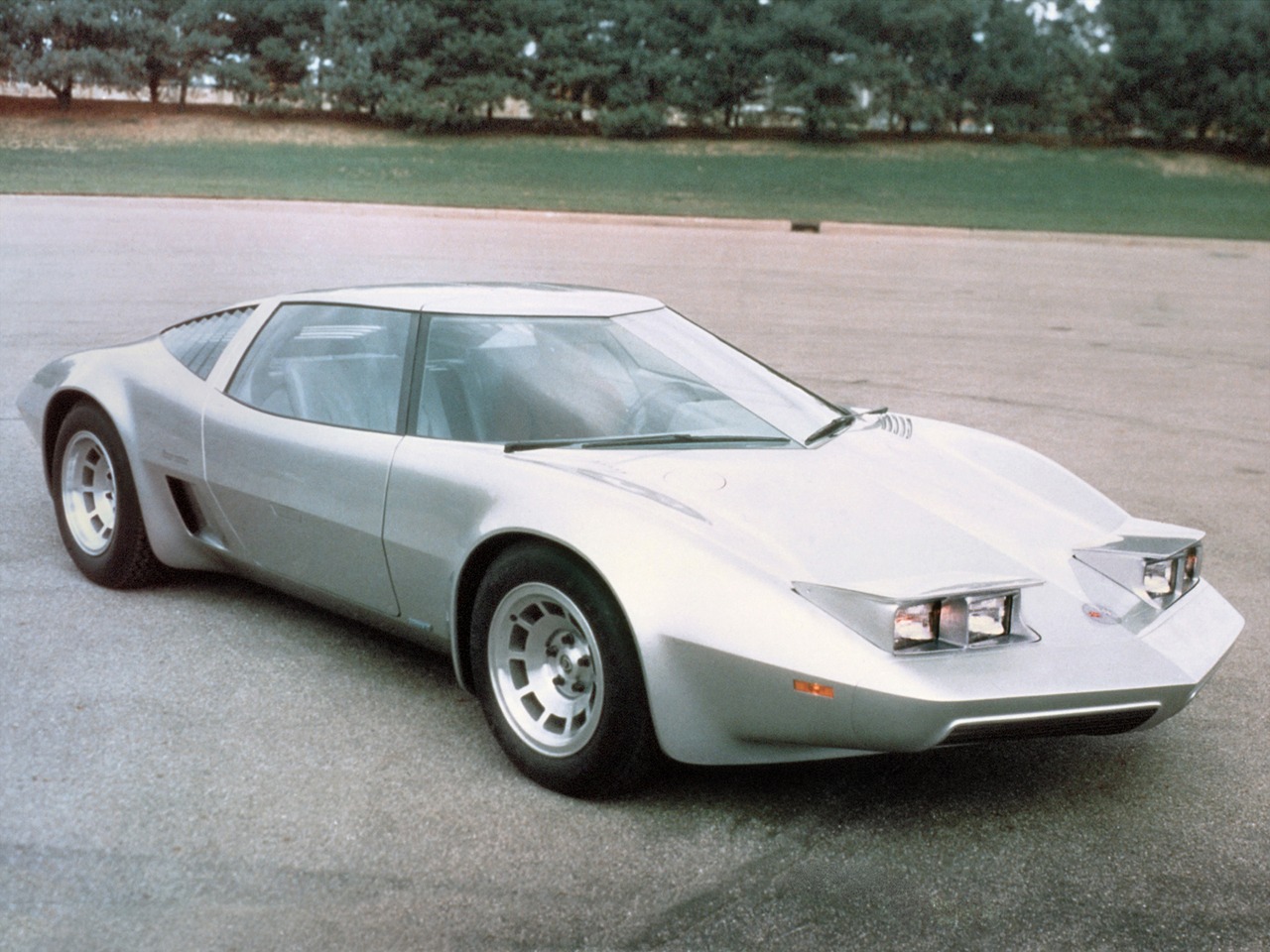
The Chevrolet Aerovette was a concept car created by Chevrolet, beginning life as Experimental Project 882 (XP-882) in the late 1960s. It had a mid-engine configuration using a transverse mounting of its V8 engine. Zora Arkus-Duntov’s engineers originally built two XP-882 prototypes during 1969, but John DeLorean, Chevrolet’s general manager, canceled the program believing it to be impractical and costly. However, when Ford announced plans to sell the DeTomaso Pantera through Lincoln-Mercury dealers, DeLorean ordered that one XP-882 prototype be cleaned up for display at the 1970 New York Auto Show.
Mercedes-Benz C111-II D Concept (1976)
In the fall of 1973, a boycott of the oil-producing countries brought about the so-called oil crisis and crude oil, hitherto an inexpensive commodity, became a precious resource. In 1976 engineers installed low-consumption diesel engine with five cylinders in the C 111-II for the first tests. In the car, now called C 111-IID, the OM 617 LA engine developed as much as 190 hp, thanks to turbocharging and intercooling.
With this powerful diesel engine under the bonnet of a spectacularly styled gull-wing model, painted in bright orange, Mercedes-Benz was soon geared up for some record-breaking drives. The C 111-II D powered its way to some sensational records at the Nardo circuit in southern Italy in 1976. For a whole hour, for example, it circled the high-speed track at anaverage speed of 253.770 km/h. It went on to collect further records in all categories – over distances of 10 to 10,000 kilometres and over periods of 6 to 24 hours.
No one had previously thought a diesel vehicle capable of such performance.
Panther 6 Six (1977)
The extraordinary Panther 6 could well have been the first road car to achieve the mythical 200mph barrier. While only 2 examples of this incredible 6 wheeled convertible were ever made, a massive 8.2 litre twin-turbo V8 producing 600bhp goes a long way to validating Panther’s claim that this was the worlds fastest production car of its time.
Not only was the ‘6’ an incredible performer but it offered luxury trim and advanced in car facilities as well. Electronic instrumentation, a telephone (in 1977!), television and even an automatic fire extinguishing system were all standard fitment on the ‘6’.
Mercedes-Benz C111-III Diesel Concept (1977)
The success of the sparsely modified C 111-II in Nardo spurred the developers on to new heights. This time, they did not create a design study for a road-going sports car but a thoroughbred racing car for the sole purpose of establishing speed records: the C 111-III. The new car was built in 1977; it was narrower than the first C 111, had a longer wheelbase and perfect aerodynamic properties, thanks to complete streamlining and rear airfoils. In 1978, the C 111-III lined up at the start in Nardo. Once again, a diesel engine growled under the silver-painted plastic bodywork. While this engine had been derived from a production unit, it had been tuned to develop 230 hp and gave the streamlined car a top speed well over 300 km/h. With this Silver Arrow, Mercedes-Benz established nine absolute world records in the late 1970s.
The career of the diesel engine is unstoppable. Mercedes-Benz sets nine new records with the C111-III:
100 kilometres at 316.484 km/h
100 miles at 319.835 km/h
500 kilometres at 321.860 km/h
500 miles at 320.788 km/h
1000 kilometres at 318.308 km/h
1000 miles at 319.091 km/h
1 hour at 321.843 km/h
6 hours at 317.796 km/h
12 hours at 314.463 km/h
Ford Probe I (1979)
1979 Ghia Concept Car, Probe I represents the re-birth of the “American Dream Car” that Harley Earl’s Buick Y-Job started in 1939 and GM continued with the Motorama Extravaganza’s of the 1950’s. By the beginning of the 70’s the purpose built Dream Car was all but extinct.

